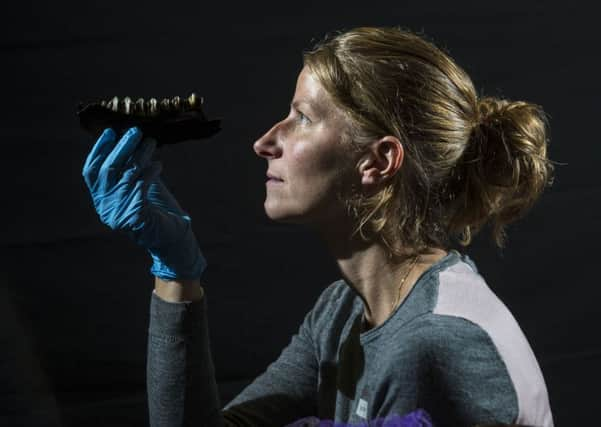Changes in conditions '˜putting key archaeology in danger'


In the first study of its kind scientists from the University of York simulated conditions found at one of Yorkshire’s best known sites, Star Carr, to see how organic artefacts, like wood and bone, reacted.
The site, north of Scarborough, is considered as important to the understanding of the Mesothilic period as Stonehenge is to the Neolithic, its waterlogged peat preserving wood and bone remarkably well over the millennia.
Advertisement
Hide AdAdvertisement
Hide AdFinds have included Britain’s oldest structure, a 10,500-year-old building and 21 red deer stag skull-caps that may have been head-dresses.
However, excavations in 2006-2007 by the Universities of York and Manchester showed an alarming level of both bone and wood deterioration, with bone samples found demineralised – known as “jellybones” – and wood found flattened and extremely crumbly.
This was thought to be related to the laying of field drains a few years earlier which had led to the water table dropping and the soil becoming much more acidic.
The researchers analysed how modern and archeological samples of bone and wood reacted in saturated, fluctuating and dry conditions, burying them in peat from Star Carr, as well as garden compost and sand.
Advertisement
Hide AdAdvertisement
Hide AdThey found that after just 12 months “under the extreme geochemical conditions identified in areas of the Star Carr site, both bone and wood are at critical risk of rapid and irreversible deterioration”.
Researchers are now urging the archaeological community to reassess the assumed tradition of preserving sites such as Star Carr in situ, and consider urgent excavations to retrieve valuable organic remains.
Dr Kirsty High, Research Fellow in York’s Department of Chemistry and lead author of the study, said they had been surprised by how quickly the samples deteriorated.
She said: “The rapid deterioration of unique organic archaeological remains at Star Carr is an irreplaceable loss of our cultural heritage.
Advertisement
Hide AdAdvertisement
Hide Ad“Critically, the short timescale of this experiment highlights the alarming rate at which this process can occur, raising concerns for the continued survival of matter buried there and at other sites with similar conditions.
“It is imperative that we understand and monitor the environmental and geochemical conditions in wetland areas to determine the timescale for the future management and successful preservation of archaeological sites.”
Dr Kirsty Penkman, senior lecturer in York’s Department of Chemistry and co-author of the study, said: “As potential threats to wetlands – such as pollution and changes in land use – continue to occur on an unprecedented scale, it is increasingly likely that other waterlogged archaeological sites are at risk from similar processes to those seen at Star Carr.
“The severity of decay seen in artefacts is rapid and irreversible, and has global implications in informing and challenging the current policy of organic remains being preserved in situ – a method previously believed to best protect archaeological artefacts for future research.”
There are many waterlogged sites in Yorkshire which contain archeological deposits. They range from the Humber Wetlands to North York Moors and the Vale of Pickering.